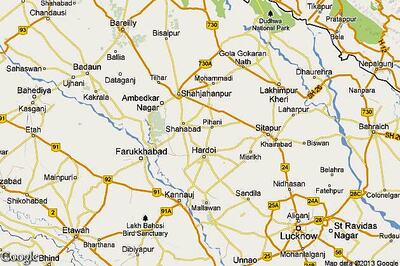Cryogenic Stage Failure: ISRO's GSLV-F10 Took Off as Planned, Here's What Went Wrong 5 Minutes Later

views
The Indian Space Research Organisation (Isro)’s geosynchronous satellite launch vehicle (GSLV) failed to put the EOS-3 earth observation satellite into orbit Thursday.
News18 explains the technical anomaly that led to India’s third failed attempt:
So what exactly went wrong?
The GSLV lifted off from the Satish Dhawan Space Centre. The initial phases of the flight, including burns by four strap-on boosters and the first and second stages, appeared to go as planned, as did the separation of the rocket’s payload fairing.
Four minutes and 55 seconds after liftoff, the second stage separated and, one second later, the upper stage’s cryogenic engine ignited. The stage appeared to start to roll and lose attitude control moments later, based on animations derived from launch vehicle telemetry shown on the webcast by the Indian space agency ISRO.
At one point, telemetry screens showed the stage losing altitude and velocity, while the animation showed the stage had clearly lost attitude control. Minutes of silence followed on the webcast before ISRO confirmed that the launch had failed.
The cryogenic stage did not ignite, rendering the mission a failure.
The launch “could not be fully accomplished mainly because of a technical anomaly observed in the cryogenic stage,” K. Sivan, chairman of ISRO, said. He offered no other details about the failure.
What is cryogenic stage?
A cryogenic stage is the last stage of space launch vehicles which makes use of materials at extremely low temperatures to lift and place the heavier objects in space.
Cryogenic engine makes use of Liquid Oxygen and Liquid Hydrogen as propellants. Both are stored in their respective tanks. From there they are pumped in to turbo pump by individual booster pumps to ensure a high flow rate of propellants inside the combustion chamber.
Why was the launch so important?
Reports said that the advanced imaging satellite had been described as a “game changer” for India with its high resolution cameras allowing constant, real-time monitoring of the Indian landmass and the oceans. Among the key areas where it could have proved its utility is defence, enabling “special attention to the country’s borders for security reasons”.
Further, when it comes to natural disasters, monitoring by the satellite could have ensured that precautions are taken well in advance to reduce their impact. Apart from disaster warning, ISRO said the satellite will also provide “spectral signatures for agriculture, forestry, mineralogy, cloud properties, snow and glaciers and oceanography” and will be carrying multispectral and hyperspectral cameras in different bands “with improved spatial and temporal resolution”.
What took the launch so long?
From technical glitches to the Covid-19 pandemic, the Gisat-1 launch has had to suffer multiple delays and will be only the second launch by ISRO so far in 2021 following the February launch of 18 small satellites.
It was originally slated for launched on March 5, 2020, but that was cancelled due to technical reasons. Right after followed the pandemic and the lockdowns it brought along with it, which meant the the Gisat-1 launch suffered a lengthy delay. Rescheduled for March 28 this year, “a minor issue” first led the launch to be put off till April and, then, as the second wave broke, to May.
Read all the Latest News, Breaking News and Coronavirus News here.




















Comments
0 comment